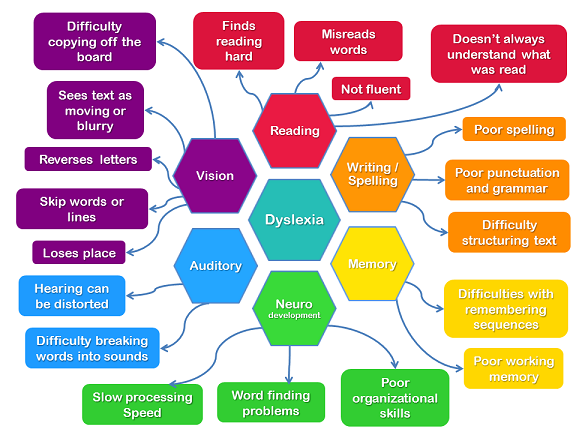Dyslexia is an often-misunderstood, confusing term for reading problems. The word dyslexia is made up of two different parts: dys meaning not or difficult, and lexia meaning words, reading, or language. So quite literally, dyslexia means difficulty with words.
Despite the many confusions and misunderstandings, the term dyslexia is commonly used by medical personnel, researchers, and clinicians. One of the most common misunderstandings about this condition is that dyslexia is a problem of letter or word reversals (b/d, was/saw) or of letters, words, or sentences “dancing around” on the page
In fact, writing and reading letters and words backwards are common in the early stages of learning to read and write among average and dyslexic children alike, and the presence of reversals may or may not indicate an underlying reading problem. See Table 1 for explanations of this and other common misunderstandings.
One of the most complete definitions of dyslexia comes from over 20 years of research:
Dyslexia is a specific learning disability that is neurobiological in origin. It is characterized by difficulties with accurate and/or fluent word recognition and by poor spelling and decoding abilities. These difficulties typically result from a deficit in the phonological component of language that is often unexpected in relation to other cognitive abilities and the provision of effective classroom instruction.
Dyslexia is a specific learning disability in reading that often affects spelling as well. In fact, reading disability is the most widely known and most carefully studied of the learning disabilities, affecting 80% of all those designated as learning disabled. Because of this, we will use the terms dyslexia and reading disabilities (RD) interchangeably in this article to describe the students of interest.
It is neurobiological in origin, meaning that the problem is located physically in the brain. Dyslexia is not caused by poverty, developmental delay, speech or hearing impairments, or learning a second language, although those conditions may put a child more at risk for developing a reading disability.
Children with dyslexia will often show two obvious difficulties when asked to read text at their grade level. First, they will not be able to read as many of the words in a text by sight as average readers. There will be many words on which they stumble, guess at, or attempt to “sound out.” This is the problem with “fluent word recognition” identified in the previous definition.
Second, they will often show decoding difficulties, meaning that their attempts to identify words they do not know will produce many errors. They will not be very accurate in using letter-sound relationships in combination with context to identify unknown words.
These problems in word recognition are due to an underlying deficit in the sound component of language that makes it very difficult for readers to connect letters and sounds in order to decode. People with dyslexia often have trouble comprehending what they read because of the great difficulty they experience in accessing the printed words.
Source: LINK

